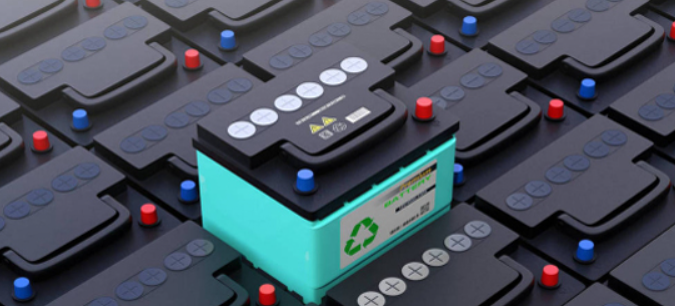Lithium battery is an increasingly widely used energy storage conversion device, the correct use methoud of lithium batteries is so important, because its excellent electrochemical performance realizes a small-medium-large-scale market application scenario that keeps pace with the times, when we talk about lithium battery When used correctly, it usually refers to small applications, i.e. consumer electronics, such as smartphones, laptops. Because large and medium-sized applications are based on small-scale application technology, small-scale applications have common characteristics, while large and medium-sized applications are much more complex. Usually, medium-sized applications are on new energy vehicles, which we generally call power batteries; large-scale applications are usually in Above the base station, we generally call it an energy storage battery. Therefore, when we talk about “how to use lithium batteries”, it is in line with people’s habit to limit lithium batteries to small applications.

The working principle of lithium batteries is nothing more than charging to store energy, and discharging into other energy and releasing it. It is in an idle state when it is neither charged nor discharged. Therefore, there are three major aspects of the correct use of lithium batteries: correct charging, correct discharging, and correct maintenance.
Correct charging method of lithium battery
Take the time to prevent overcharging. Do the right thing at the right time, although lithium batteries themselves have excellent electrochemical performance, however, any kind of thing will have safety hazards when it deviates from the equilibrium state. To elaborate,
- When charging, charging. In the early days of smartphones, each mobile phone manufacturer often emphasized the use of original chargers (including charging cables) to charge electrical equipment for the purpose of protecting their own interests. Some manufacturers designed special data cables and did not support other Charger (including charging cable). Later, as smartphones and laptop computers became more and more widely used, it was obviously self-inflicted to keep going like this, so now everyone has basically unified the standard, and one type of charger/line can charge electrical appliances of different brands and properties. Charging is convenient, and a problem that users should pay attention to is to try to keep the battery with normal use power at all times. Under normal circumstances, when the power is too low, the mobile phone and laptop will have a reminder, and you need to replenish the power in time. Although the power is too low, it will not lead to a direct safety accident, but excessive use will cause damage to the battery structure over time. .
- When fully charged, unplug the socket in time. The inside of the lithium battery cell is also composed of many components. The new battery is fine. If it is used for a long time, the function of which component may decline, so there will be an overcharge safety risk. Several of the typical accidents that Samsung and Apple have been exposed to are because the owner of the appliance put the mobile phone on the bedside to charge while sleeping, and finally caused the fire and explosion.
- “The battery cannot be in two”. The author has experience that using a mobile phone while charging, especially when playing games, is very easy to feel that the mobile phone heats up. The reason is very simple. The mobile phone is equivalent to working two jobs at the same time, which makes it have to pay more labor, and the body will naturally heat up.
Correct discharge method of lithium battery
Charge in time to prevent over-discharge. Ordinary mobile phone users are unaware of the dangers of over-discharge, because there are usually no reports of safety incidents from over-discharge. Moreover, some even believe that regular deep discharge is good for the maintenance of battery performance. In fact, this is not the case, because the memory effect of lithium batteries can be ignored, and there is no such thing as a deep discharge to eliminate the memory effect. Theoretically speaking, the total cycle life of a lithium battery with deep discharge will be greater, but the risk is that over-discharge of the battery will cause the battery voltage to be too low, and it will not be able to charge normally. The lesser of two evils, a shorter service life is better than no use, so I advise the majority of mobile phone and laptop users not to use the black screen frequently.
Correct maintenance of lithium batteries
The temperature is suitable, anti-cold and hot. When idle, lithium batteries usually do not have safety accidents. The purpose of daily maintenance is to place lithium batteries in a suitable environment, thereby delaying the aging of batteries. In fact, one of the parameters of the lithium battery is the appropriate temperature. Relatively speaking, it is not a big problem if the temperature is lower, but if it is placed at a higher temperature, as the saying goes, the extreme will reverse, and it will also cause safety problems. The idle state we are talking about is only in terms of normal environment. If the lithium battery is placed in water or close to a fire source, it is already out of the topic of “maintenance”. Then, what should be done in a normal environment? The water side protects against moisture and the hot side protects against sun exposure. Therefore, the suitable environment for daily maintenance of lithium batteries should be four words: ventilation and coolness. These four words should be followed regardless of whether the lithium battery is idle independently or in an electrical appliance.
In the correct use of lithium batteries, the charging method of lithium batteries is the most important, because incorrect charging methods will cause safety problems, and discharge and daily maintenance only affect the service life of lithium batteries, and lithium batteries themselves are also a kind of Consumables, no matter what we do, we can’t avoid its final wear and tear, it’s just that we use the right method to delay its aging.




